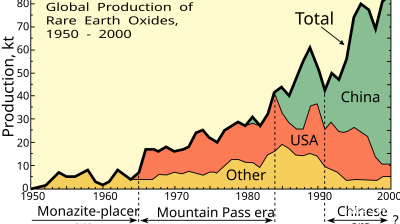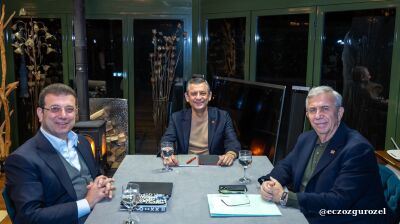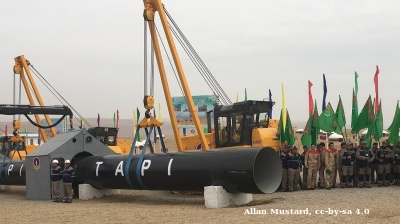Global inflation refuses to be tamed and with price increases in the US hitting 8.6% in May, the highest level in 40 years, the Fed is widely expected to continue tightening monetary policy by hiking rates, which will suck liquidity out of emerging markets.
That is a headache for central bankers in Central and Eastern Europe Middle East and Africa (CEEMEA), as falling liquidity will only make their task harder as they too grapple with the rising risk of stagflation.
“Pressure on asset prices and exchange rates across the CEEMEA region intensified in June, as rising US inflation led markets to expect much more aggressive Fed tightening over the coming months, driving the dollar higher while weighing on investor appetite for EM assets,” Ugras Ulku, head of EM Europe research and economists Benjamin Hilgenstock of Institute of International Finance (IIF), wrote in a note.
As bne IntelliNews reported, inflation is at similar highs across Central and Eastern Europe (CEE), driven up by the impact of the polycrisis the region is suffering from – a pandemic, a war, a food crisis and more. Many of the countries in the region already have deeply negative real interest rates despite several rounds of aggressive rate hikes in recent months.
“Persistent price pressures in the Euro area and the ECB’s forward guidance signalling for interest rates to start rising in July has also contributed to this dynamic,” Ulku and Hilgenstock said.
Some currencies such as the Turkish lira and Hungarian forint have suffered larger losses than others. In a protracted currency crisis, the Turkish central bank has bucked the trend and kept rates on hold in May at 14% for the fifth month in a row, despite an official inflation rate of over 70% – and independent analysts say the real rate could well be into triple digits now. Turkish President Recep Tayyip Erdogan has been widely criticised for his unorthodox views that high interest rates cause inflation, rather than reduce it, as the majority of economists believe.
In place of monetary policy, the central bank has been forced to use more indirect methods to try to control prices. Turkey on June 24 came up with what critics saw as another desperate attempt to halt the slow-motion lira meltdown, by putting in place non-capital controls on the lira that drove its value down sharply. Then the lira whipsawed on June 27 following the Erdogan administration’s announcement of another scheme, a new loan ban on companies that hold “too much” foreign currency.
The Hungarian central bank also surprised with a massive 185bp rate hike to 7.75% on June 30 – the largest one-off increase since the 2008 crisis – to head off a forecast rise in inflation to 13%-14%.
“Aside from idiosyncratic factors prompting investors to reduce their exposure to the two countries’ assets more forcefully, a deterioration of key macro indicators such as fiscal and current account deficits, low foreign exchange reserves, as well as upside inflation surprises, appear to explain, at least partially, the lira’s and forint’s underperformance relative to their CEEMEA peers,” said IIF’s Ulku and Hilgenstock.
Adding more uncertainty to the mix, Russia’s war in Ukraine has added to the price pressures by sending energy prices rocketing, which has led external balances across the region to deteriorate as a result of growing imported energy bills. Hungary is the only country (aside from Ukraine) where fiscal accounts have also worsened, reports IIF.
The post-coronavirus (COVID-19) recovery has also set countries up to have problems in the new environment. Many countries borrowed heavily to spend prodigiously during the pandemic in an effort to cushion the impact of lockdowns on their economies. It worked and the bounce-back from the pandemic was stronger and faster than expected, but as conditions worsen many countries find themselves increasingly struggling under the weight of the borrowing and going into a fresh crisis with depleted resources.
In the aftermath of the coronacrisis, it was the National Bank of Ukraine (NBU) that was first among the region’s banks to be concerned enough about rising inflation to reverse its loose monetary policy and start hiking in the first quarter of 2021. The Central Bank of Russia (CBR) was quick to follow, and CBR governor Elvia Nabiullina was early in warning that inflation was going to be a lot more persistent than most of her peers believed at the time.
As a result, the CBR continued to hike rates throughout 2021 and into 2022. Just before the war started in February economists believed that Russia had tamed inflation and was close to the end of its tightening cycle, but the outbreak of hostilities forced the CBR to put through an emergency hike, more than doubling rates to 20%. The size of the hike seems to have worked, as inflationary pressures from the shock of the outbreak of war were quickly quelled and the CBR has cut rates four times since then, bring the prime rate back to its pre-war level of 9.5% in June.
Ukraine paused rate meeting decisions after the start of the war, keeping rates on hold at 10%, but was forced to put through a massive 1,500bp hike in June to bring the prime rate to 25% as a result of the war pressures.
After Ukraine’s lead in 2021, most central banks in the region have followed suit with a string of rate hikes, starting in the second quarter of 2021.
“Aside from Russia, where the CBR has cut its key policy rate as the ruble recovered under extraordinary circumstances, Turkey’s monetary policy response is the exception to the regional monetary tightening. The CBRT began its post-COVID hiking cycle earlier than regional peers but has since reversed course with cumulative rate cuts of 500bps,” the IIF analysts say.
But these rate hikes seem to have been ineffective. IIF reports that tighter financial conditions notwithstanding, core inflation has also continued to rise across the region, “signalling in part a pass-through effect from rising food and energy prices, especially in the Czech Republic, Poland, Romania and Turkey,” say Ulku and Hilgenstock.
Going forward, Russia’s actions in its stand-off with the West will play a key role in what happens to price dynamics in the rest of the year. Gazprom reduced flows of gas to Europe by 60% in June, raising the prospect of cutting supplies completely ahead of this winter’s heating season and triggering another gas crisis that will send energy prices sky-rocketing.
Much uncertainty remains, and Germany's vice chancellor said on June 30 he suspects that Russia may not resume natural gas deliveries to Europe through the Nord Stream 1 pipeline after planned maintenance work in July. Russia has also reduced gas flows to Italy, Austria, the Czech Republic and Slovakia in June, just as European Union countries scramble to refill storage facilities to 80% by an October 1 deadline. Gazprom blamed the reduction in gas flows on Western sanctions that made it impossible to repair a broken compressor unit. Vice Chancellor Robert Habeck said a “blockade” of the pipeline is possible starting July 11, when the annual maintenance work on Nord Stream 1 is due to start, which usually lasts about 10 days.
Rising inflation is also linked to labour market dynamics and the fall in unemployment after the pandemic petered out in 2021. But the tightening of labour markets is one place where the war in Ukraine will help reduce price pressure. The polycrisis is hitting global growth and the World Bank cut its global growth outlook, released in June, almost in half to 2.8% of this year. Labour markets were already tightening in the last part of 2021, but this year economic cooling will reduce that pressure, says IIF.
“The magnitude of output losses and increases in unemployment will, to a large extent, depend on countries’ ability to continue to access Russian energy exports in the coming months,” IIF says. “A further reduction of energy (and food) supplies from Russia (and Ukraine) would also intensify upward pressure on food and energy inflation in the near term, more than offsetting easing demand pressures on core inflation dynamics.”
Currently a majority of central banks in the CEEMEA region are behind the curve in the battle to bring down inflation leading to the prospect of more growth-killing rate hikes.
“However, with output set to fall and unemployment to rise, this will become much more politically difficult to implement, especially in Poland and Turkey, where elections are set to take place in 2023. Current market pricing of terminal policy interest rates implies the expectation of a moderate growth slowdown,” the IIF’s Ulku and Hilgenstock said.
“In our view, however, the CEEMEA region will face a much more severe growth slowdown in 2022. This would mean, in essence, lower terminal rates as well as earlier and faster rate cuts than currently priced,” the IIF’s Ulku and Hilgenstock concluded.
Features

US denies negotiating with China over Taiwan, as Beijing presses for reunification
Marco Rubio, the US Secretary of State, told reporters that the administration of Donald Trump is not contemplating any agreement that would compromise Taiwan’s status.

Asian economies weigh their options amid fears of over-reliance on Chinese rare-earths
Just how control over these critical minerals plays out will be a long fought battle lasting decades, and one that will increasingly define Asia’s industrial future.

BEYOND THE BOSPORUS: Espionage claims thrown at Imamoglu mean relief at dismissal of CHP court case is short-lived
Wife of Erdogan opponent mocks regime, saying it is also alleged that her husband “set Rome on fire”. Demands investigation.

Turkmenistan’s TAPI gas pipeline takes off
Turkmenistan's 1,800km TAPI gas pipeline breaks ground after 30 years with first 14km completed into Afghanistan, aiming to deliver 33bcm annually to Pakistan and India by 2027 despite geopolitical hurdles.




